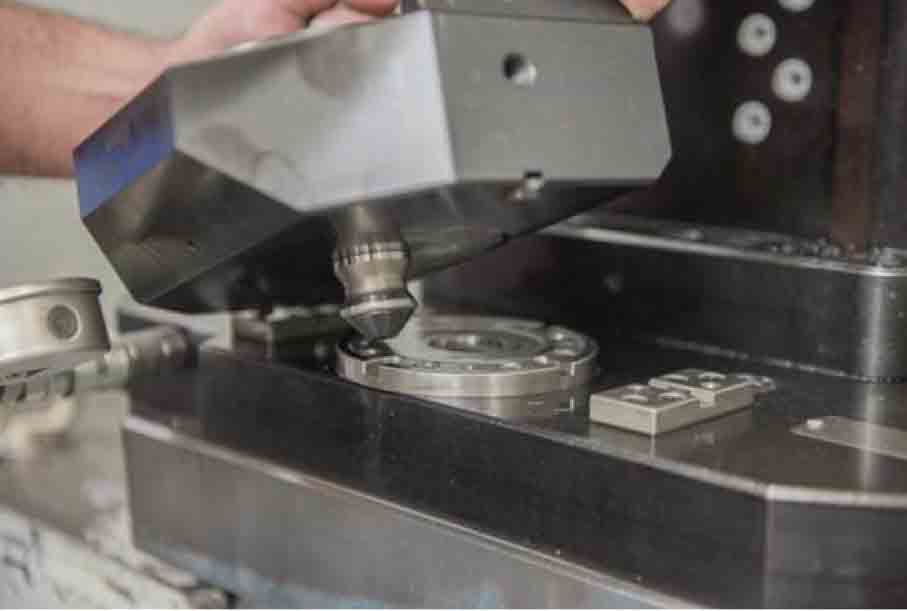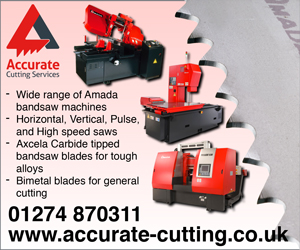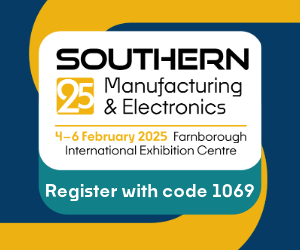Frankfurt am Main, 25 April 2017. – The potentials of clamping technology in a process-optimised manufacturing operation will be spotlighted from all viewpoints at the EMO Hannover 2017. Here, too, additive processes open up entirely new options. For digitally networked manufacturing processes, intelligent clamping devices will play a crucial role.
He is thoroughly familiar with the sector, its needs and concerns: Bernt Ritz, Consultant for Technology, Standardisation and Clamping Tools in the German Engineering Federation’s Precision Tools Association, outlines the trends that manufacturers of clamping technology are currently having to address:
- progressively increased machining of composites, lightweight components, thin-walled and miniaturised components,
- individualisation of workpieces, and concomitantly smaller batch sizes,
- higher concentricity accuracies and balance qualities for tool holders,
- fully automatable manufacturing processes and reliable process monitoring,
- automated workpiece placement,
- networking and unambiguous identification of clamping technology components,
- implementation of sensor technology for data acquisition and transmission, plus
- online configurators for clamping components.
This maps out the framework within which the sector’s innovative efforts are proceeding in the run-up to the EMO Hannover 2017 – and the innovative bandwidth of the exhibitors concerned extends even beyond this.
Potentials of networked clamping technology
To quote Jürgen Förster, Authorised Signatory and Sales Manager at AMF Andreas Maier GmbH & Co. KG, Fellbach, for example: “Most customers have meanwhile comprehended and taken on board the importance and the potential of clamping technology in a process-optimised manufacturing operation. Whereas, for instance, the primary focus used to be on faster machine tools or longer useful lifetimes of the cutting materials, nowadays clamping technology has at least the same perceived importance.”
Automatability, of course, plays a major role in this context. Different retrieval options and concomitantly seamless communication with the machine tool are nowadays considered standard features. As a complete-system vendor of different clamping media, says Jürgen Förster, “we see a very definite trend towards a combination of different clamping methods. Zero-point clamping technology often constitutes the basis, and is supplemented by hydraulic, magnetic or pneumatic systems to form a flexible modularised whole.” Seamless networking and communication between the clamping devices and the machine tool are crucial factors for an optimised manufacturing solution in regard to Industry 4.0 and the associated components. The Sales Manager sees his firm’s remit in its role of a clamping device manufacturer as “using the existing as-is status in the customer’s manufacturing operation as the basis for planning and for optimising the production processes concerned”.
Experience here has shown “that given early involvement of the staff, there are almost no limits to the creativity and willingness to optimise of each individual”. Together with a manufacturer of medical technology, for example, a solution has been developed “in which the result exceeded even our own expectations”. For instance, AMF has fitted the zero-point clamping modules with position sensors, thus assuring automated manufacturing with robot loading in a dependable process.
“We’re looking forward to this year’s EMO in Hannover”, says Jürgen Förster, “where we shall be showcasing our corporate capabilities and our expertise in all the different facets of clamping technology. In addition, the topic of ‘affordable automation solutions for existing machine tools’ is a keynote issue. Low-cost automation, including loading, gripping, storing, clamping and identification, is the guiding principle here.”
Choosing the right clamping device
Depending on the metal-cutting tools being used, explains Rolf Ehrler, Product Manager Clamping Devices and Milling Tools at Gühring KG, Albstadt, “the tool clamping devices are becoming progressively more specific, meaning that in parallel to the development of high-precision tools we are also seeing a reciprocally entailed diversification of the clamping devices.” He is rather sceptical when it comes to the role of “smart” clamping devices in networked manufacturing operations: “Smart holders (sensory and intelligent) are being researched, but due to the lack of networking are not yet suitable for full-coverage use.” Instead, he advocates “optimally dimensioned and selected clamping devices”, with which metal-cutting tools “can be used to significantly better effect and pushed towards enhanced machining performance and longer useful lifetimes”. At the EMO Hannover 2017, there will be “a Future Display on show, devoted entirely to the smart factory concept, exemplified by exhibits like clamping devices produced using additive manufacturing.”
Extremely slim chucks thanks to additive manufacturing
In a digitally networked manufacturing operation, clamping technology will play a crucial role, since for an optimal process the blade often has to be brought closer to the working point on the component than had hitherto been possible. For this purpose, chucks are required that are extremely slim in construction without any loss in performance. This stipulation is being met by Mapal Dr. Kress KG, Aalen, not least with its slim-contour hydraulic expanding chucks, which enable hydraulic expansion clamping technology to be employed precisely where shrink-fit chucks used to be the only option. This is made possible by additive manufacturing: the functional area is deposited on the conventionally manufactured main body using selective laser melting.
Since dry machining is accounting for a progressively larger share of the manufacturing processes involved (not least out of environmental considerations), the thermal stability of the chucks is crucial. Thanks to additive manufacturing, the temperature-critical solder joint between the clamping sleeve and the main body can be dispensed with. This means the chucks can be used in a reliable process at operating temperatures of up to 170°C. Additive manufacturing, to quote Jochen Schmidt, Product Manager Clamping Technology at Mapal, “creates entirely new concepts for clamping technology, offering an added value for the customer in terms of process reliability and costs. We are already using this technology for series production. This has enabled the limits of the possible to be continually redefined in the past, present and future.”
Jochen Schmidt concurs that mass production operations will increasingly demand chucks that can be integrated into intelligent manufacturing structures featuring a high degree of automation: “All system components here have to be amenable to digital networking.” Tool chucks are normally used only in direct clamping applications – for small diameters as well. “With the aid of additive manufacturing,” he says, “we have succeeded in offering precisely this kind of chuck: hydraulic expanding chucks with a slim contour for direct clamping of tools with diameters of 3 mm or more”.
At the EMO Hannover 2017, Mapal will be focusing not least on application-driven chucks: direct clamping of small diameters using hydraulic expansion clamping technology, very slim chucks, but also vibration-damped tool systems.
Modularised systems for flexible applications
There’s a “trend towards highly compatible modularised systems enabling each and every clamping task to be solved intelligently and affordably, and at the same time assuring a high level of consistency between different machines,” reports Markus Michelberger, Sales Manager Clamping Technology at Heinz-Dieter Schunk GmbH & Co. Spanntechnik KG, Mengen. The factors of automation, flexibilisation and digitisation will in future become crucial determinants for success in production operations: “With the aid of sensors, clamping devices will very soon be able to continuously monitor the clamping force. If this decreases, or if vibrations occur, the machining parameters will be automatically adjusted so as to assure a reliable process and maximised efficiency.” For example, the intelligent “Magnos Force Measuring System”, which will be on show at the EMO Hannover as a technology study, will enable the clamping force to be continuously acquired in the case of magnetic clamping solutions, and the process data to be responsively adjusted. In addition, says Markus Michelberger, “with the world’s first electrically controlled 24-V zero-point clamping module we are driving forward the trend towards a fluid-free, highly networked machine tool”.
Additively manufactured components will also, he believes, be gaining steadily in perceived importance during the years ahead: “The best example is our performatively dense multi-purpose grippers, which by reason of their high gripping forces can in some cases also be used as clamping devices.” In the shape of the web-based ‘E-Grip’ 3D design tool, for the first time a solution has been developed for additively manufactured gripper fingers. The licence-free web tool cuts the amount of time required for designing individual gripper fingers to just 15 minutes. Rather like using an online photo service, the operator configures the gripper fingers desired by uploading one of his own Step or STL files and specifying a series of variables, such as gripper type, weight, the gripper’s mounting position or the fingers’ length. Once the ordering procedure has been completed, the gripper fingers are additively manufactured and delivered within one week.
The general consensus is that tomorrow’s manufacturing systems will be completely networked, and will, not least with the aid of the clamping devices and gripping systems, continuously acquire both their own status and that of their surroundings. “Our goal,” explains Markus Michelberger, “is to utilise the exposed ‘closest-to-the-part’ position of our modules in order in future to provide detailed monitoring of each individual step in the process, and to continuously supply the line’s control system and the higher-order ERP system with process data.” Schunk’s highlights at the EMO Hannover will include a design-enhanced modularised system for direct workpiece clamping and a system program for stationary workpiece clamping, supplemented by clamping devices with intelligent electric drives.
Author: Walter Frick, specialist journalist from Weikersheim







